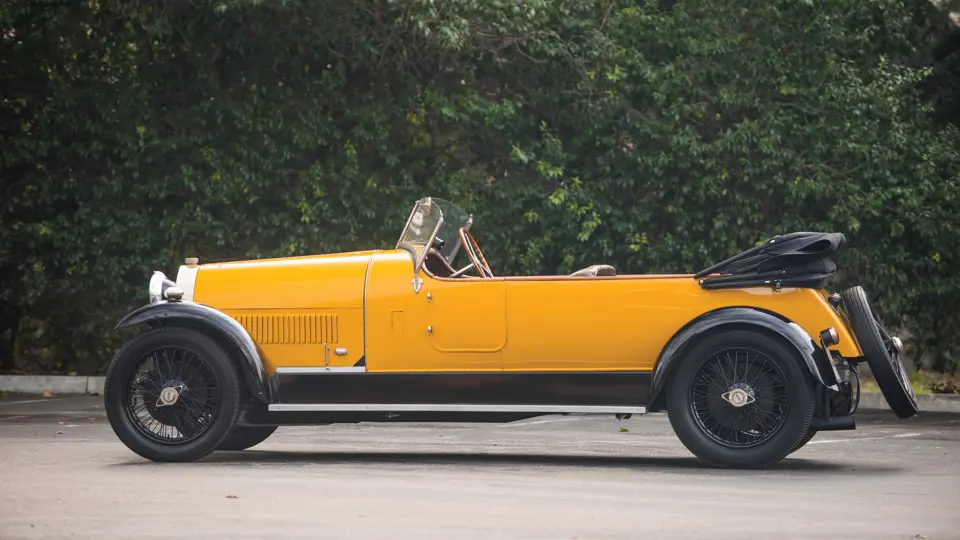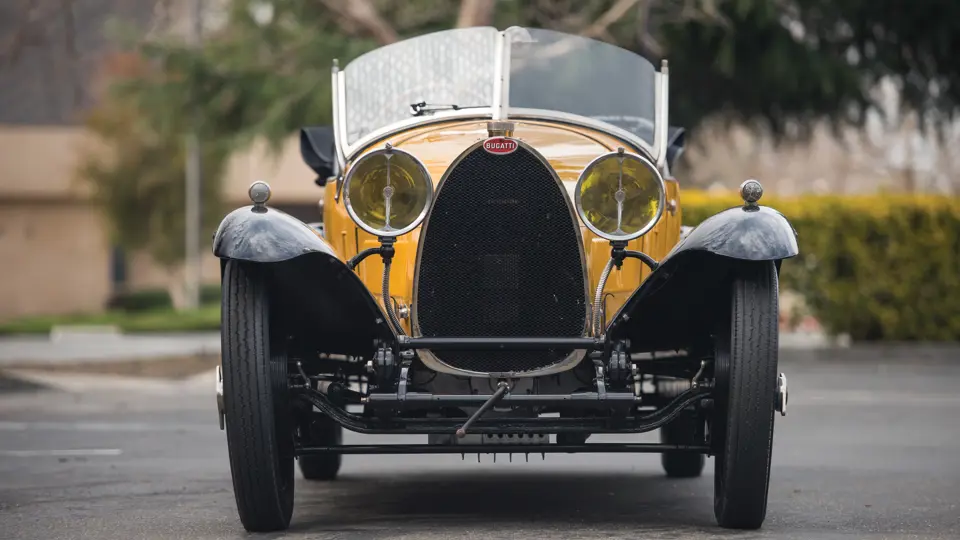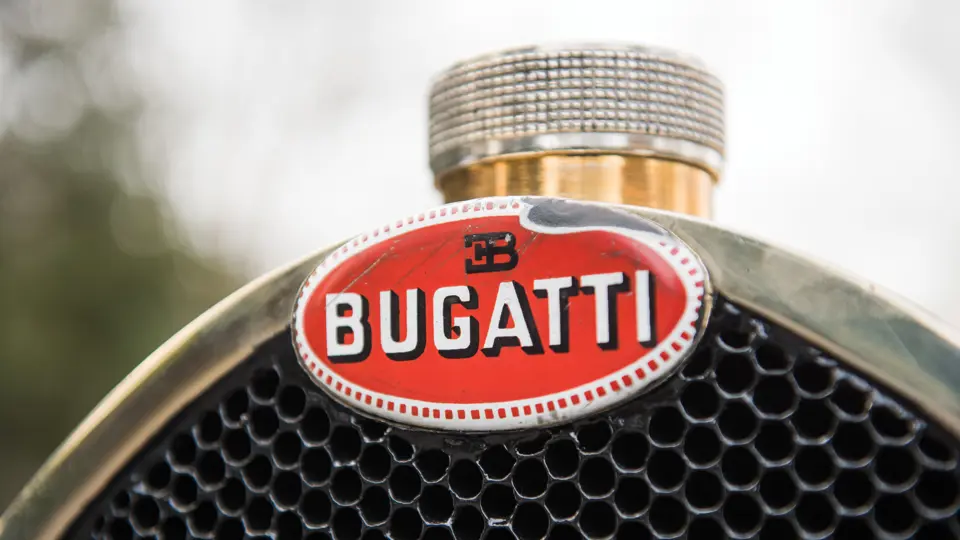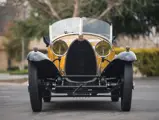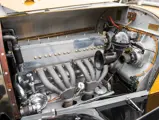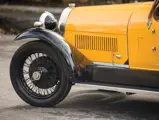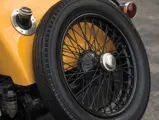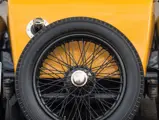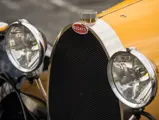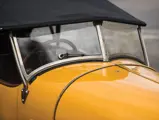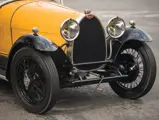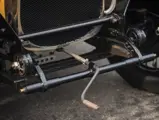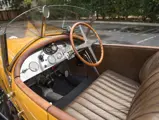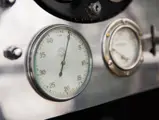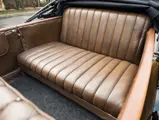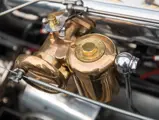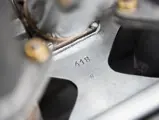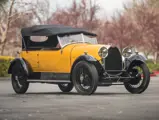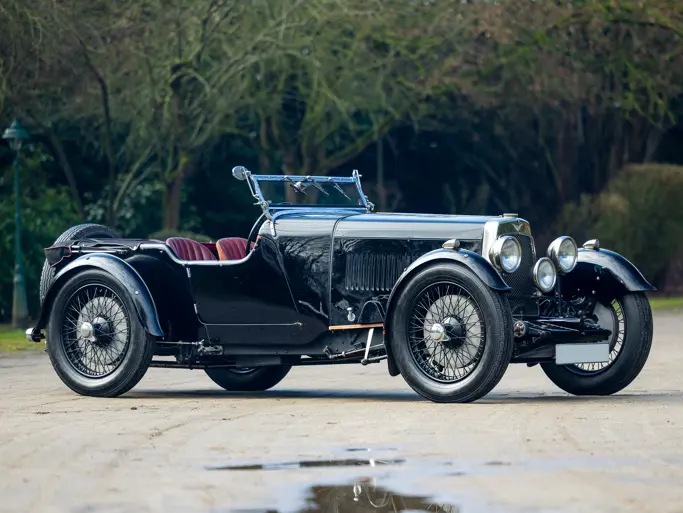
1925 Bugatti Type 30 Tourer
{{lr.item.text}}
$500,000 - $650,000 USD | Not Sold
{{bidding.lot.reserveStatusFormatted}}
- The model that begat the straight eight-cylinder Bugatti
- Highly attractive and sporting original coachwork
- Known and well-researched history since new
- Formerly owned by Bernard Viallon
100 bhp, 1,991 cc SOHC inline eight-cylinder engine with dual Solex carburetors, four-speed manual transmission, live front axle with semi-elliptic leaf-spring front suspension, live rear axle with quarter-elliptic leaf-spring suspension, and front hydraulic and rear mechanical drum brakes. Wheelbase: 112 in.
The Bugatti Type 35 remains today the most successful racing car, in terms of overall number of victories, ever built. The heritage that led to this all-conquering model began here, with the Type 30, the first eight-cylinder production Bugatti.
The Type 30’s engineering was not as exciting as subsequent Bugattis, nor was it fast; where it excelled was in jewel-like mechanical sophistication. The engine sported a barrel-type crankcase under a pair of fixed-head cylinder blocks, surmounted by a single cambox in which the overhead camshaft operated the valves by finger-type rockers to the two inlets and a single exhaust valve per cylinder. Carburetion was supplied by a pair of either Zenith or Solex carburetors; ignition was initially by magneto, with a coil used for later cars. A fine four-speed gearbox with right-hand change lever and mesh gears, shifting through a wet multi-plate clutch, ensured the remarkably rapid gear change for which all Bugattis were renowned. The I-beam front axle was new and substantially constructed, and hydraulic front brakes were installed, with the rear drums considerably larger than those at the front.
Almost exactly 600 examples of this thrilling little car were produced between 1922 and early 1926.
CHASSIS NUMBER 4725
Chassis 4725, offered here, is accompanied by a report compiled by Dutch Bugatti expert Kees Jansen. Jansen notes that the car was ordered by Bugatti agent Dubuisson of St. Quintin for his customer, Mr. Chavel, and that the chassis was produced in January of 1926. Dubuisson purchased the rolling chassis only, with an unknown coachbuilder producing the elegant four-passenger open Tourer body, with two doors: one on the left, for the front passenger, and one on the right rear! Importantly, early photographs depict the car with the sexy rakish vee’d windshield that it still wears today, showing that it has had this feature since new. The car was driven on garage plates 1651 WW5 by Bugatti racing driver, Louis Charavel, who competed successfully under the pseudonym of “Sabipa.”
Delivered to Monsieur Chavel, the car remained with his family until 1960, a remarkable 35 years of continuous ownership. It was subsequently sold to J.P. Léger of Dreux. A photograph, published in Yan Verdier’s Y Une Vie pour Bugatti, shows the car in this period at Henri Novo’s famous Bugatti garage, with the engine removed; it was at this point that the current engine, 418, another correct Type 30 unit, was installed. Also in this period, the car was refinished in its present color scheme of yellow with black cycle fenders and wire wheels.
The next known owner was Henri Chambon of Clermont Ferrand, who purchased the car in 1972 and registered it as 7892 QG 63, using it at the International Bugatti Meeting in Denmark five years later. It next passed to Bernard Viallon, a well-known collector whose stable included a number of Bugattis. Viallon’s cars were famously used for color illustrations in one of the most famous works on the Bugatti marque, Bugatti Magnum, written by the renowned Bugatti historian Hugh Conway and published in 1989; this car appears on pages 111 and 112.
The car has now been a resident of its present owner’s collection for two decades and during that time has seldom been shown in public. It retains its original frame, transmission number 1420 (a high number due to the fact that the same type of transmission was also used on the Brescias), and original rear axle number 588. The finishes throughout are in good condition, including the attractive paintwork of the body, older but overall well-preserved brown leather upholstery, rich inner wood capping along the sides of the body and dashboard, and a black cloth top that is in good shape. Marchal headlamps accentuate the overall sporting appearance, while the underside and engine bay are presentable and correct.
“Cute as a button,” this Type 30 is a petite little eight-cylinder jewel that would be great fun for a new owner. It is appealing both to the serious Bugatti enthusiast and simply to anyone who enjoys beautiful lines on a superbly engineered chassis.

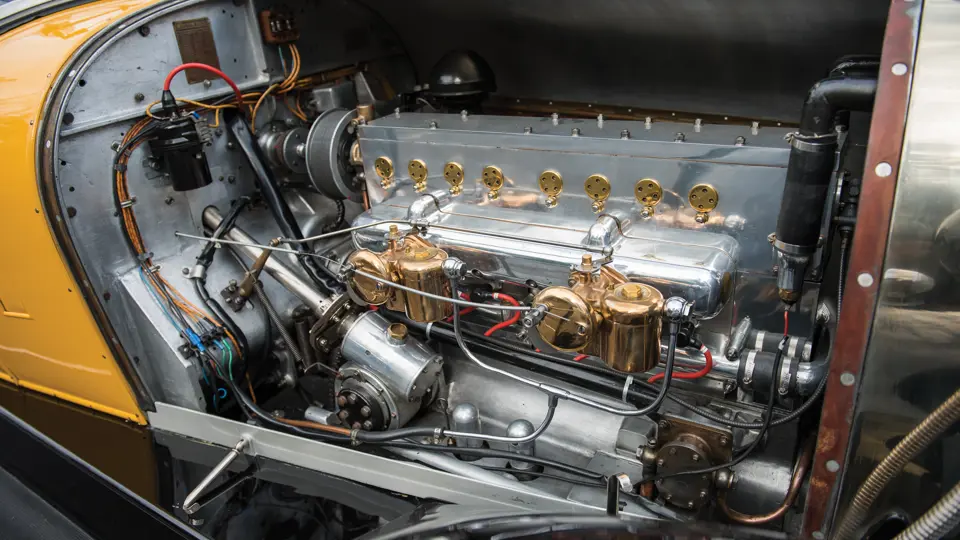


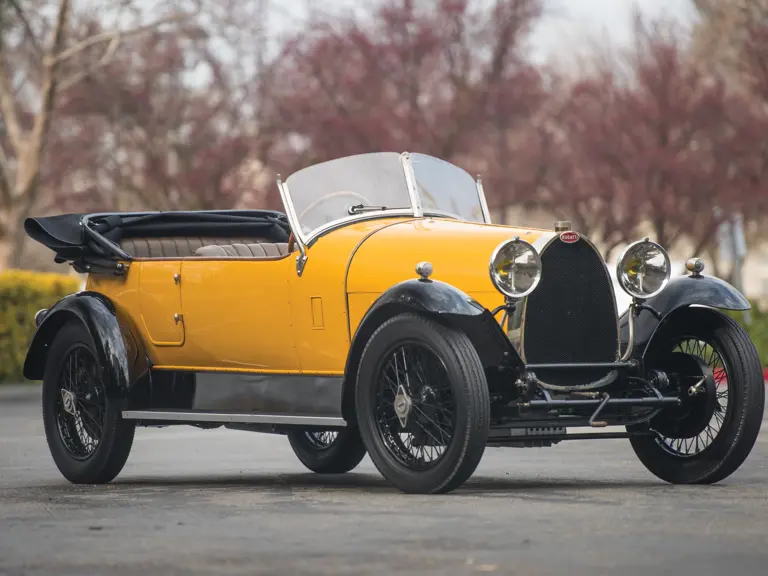
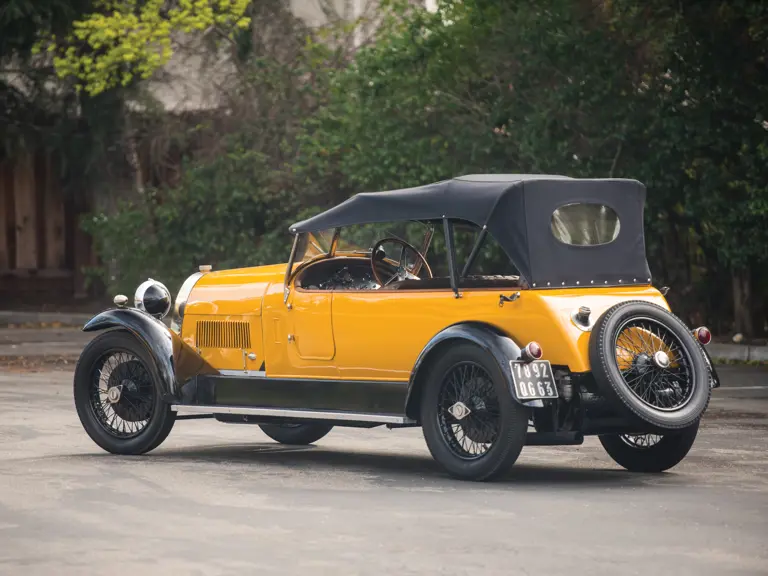
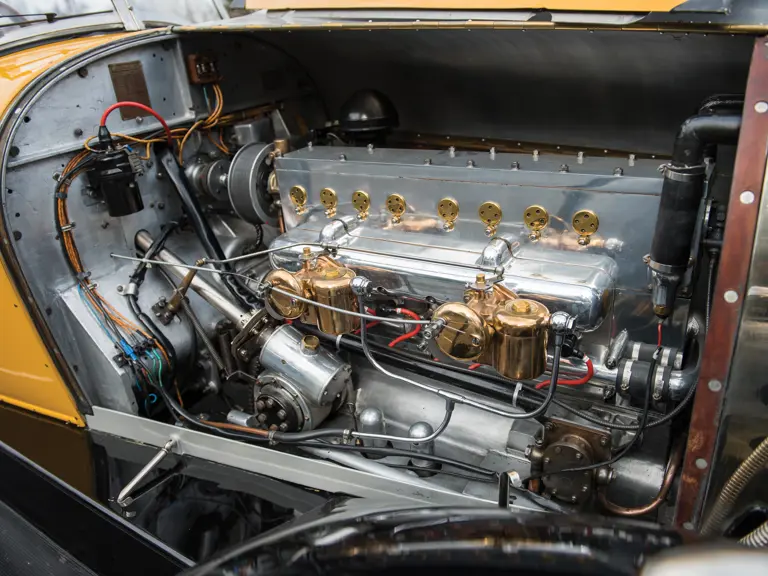
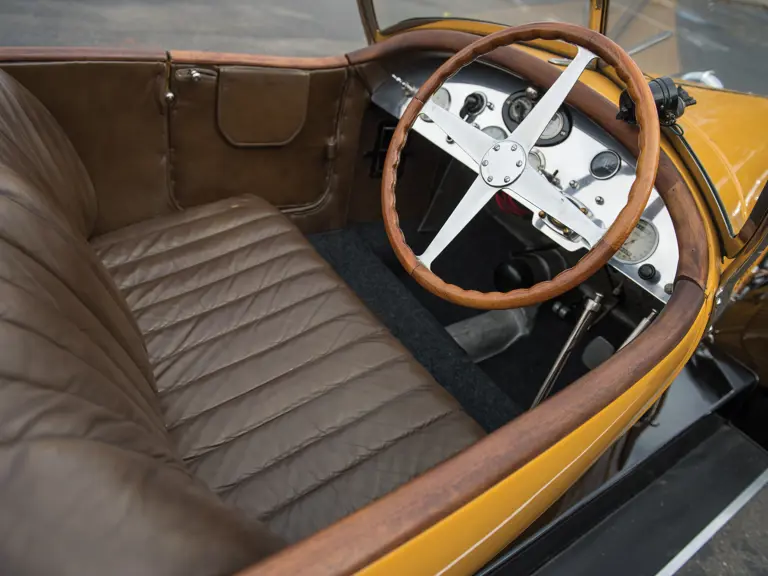

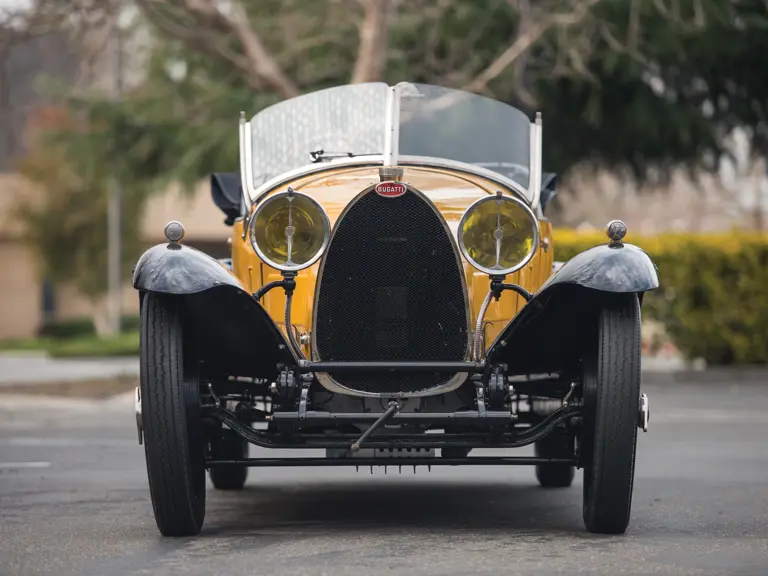
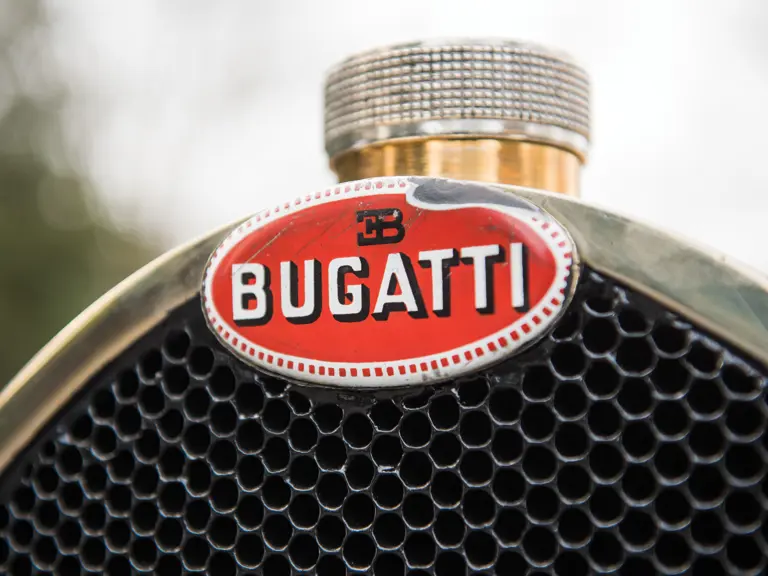
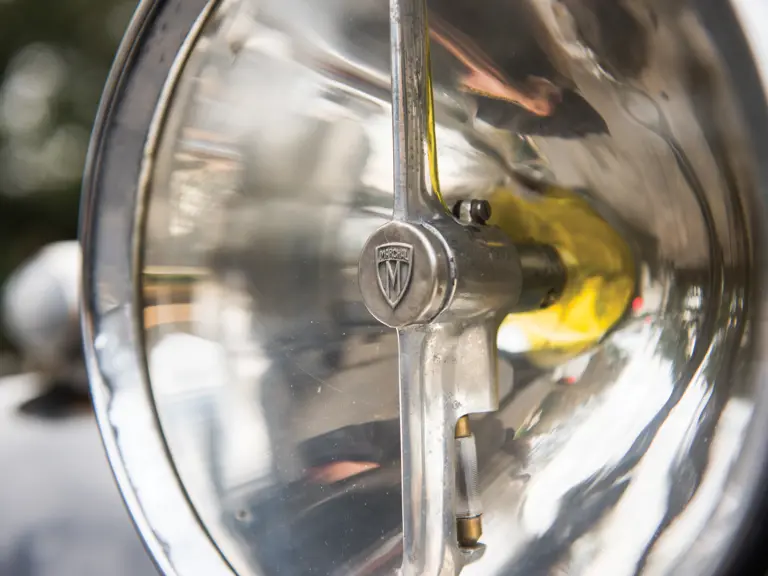
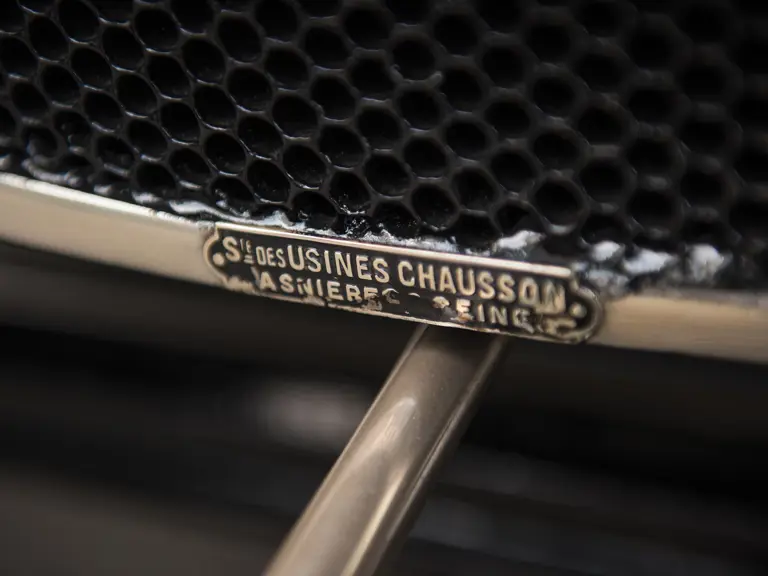

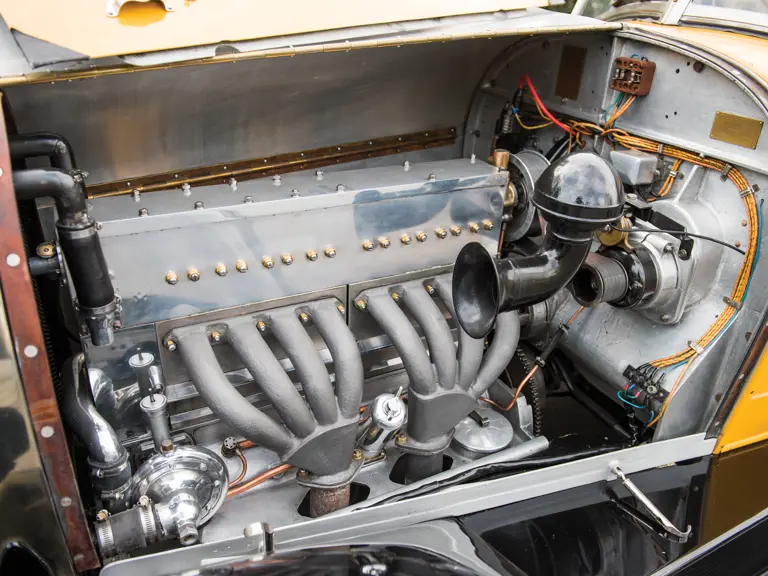
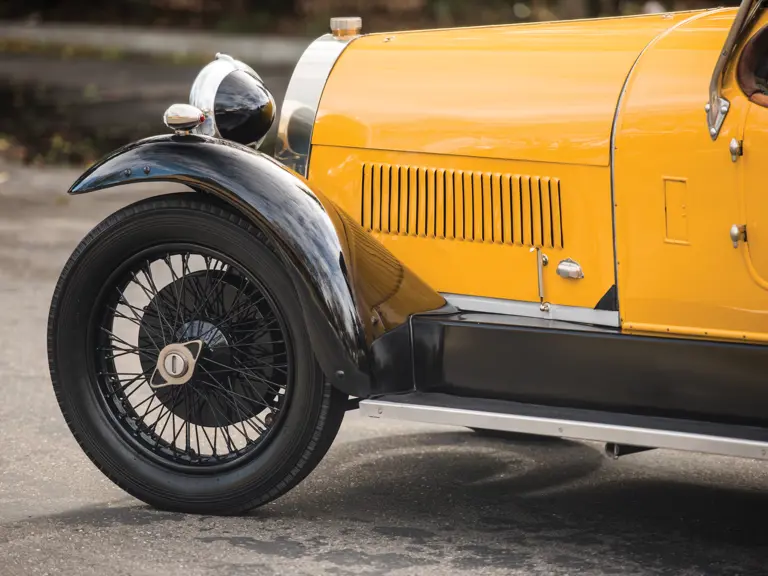
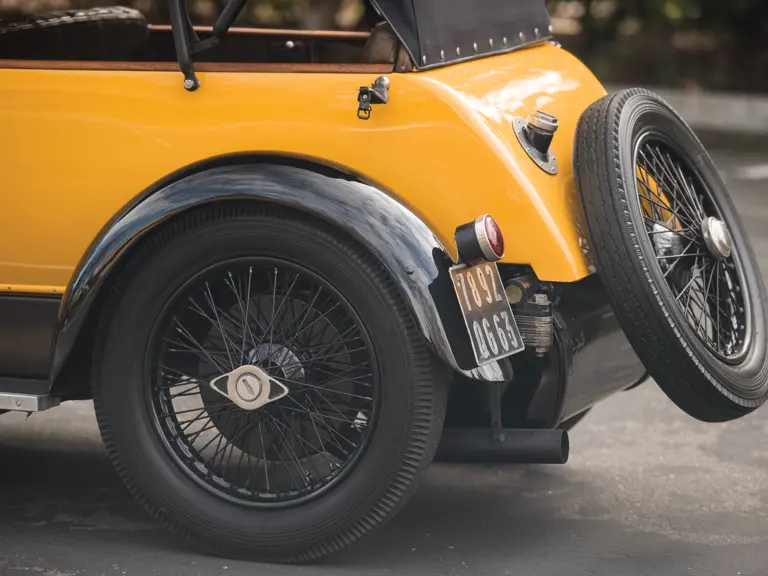
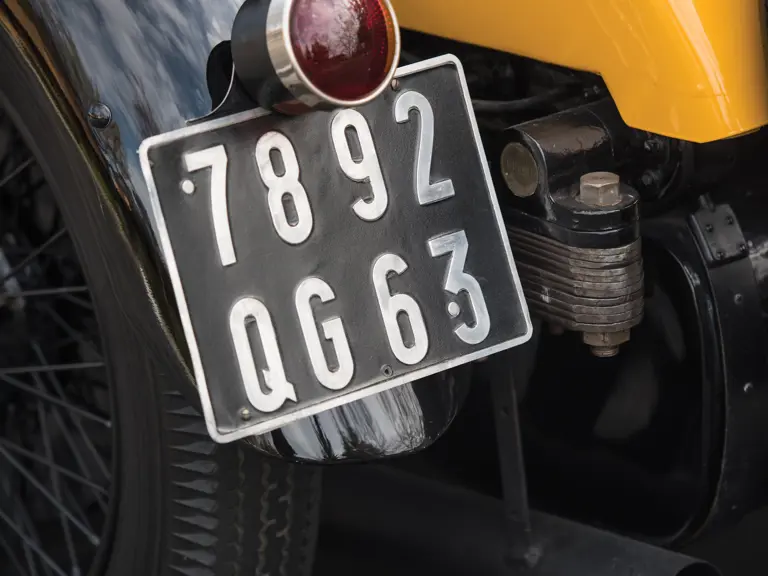
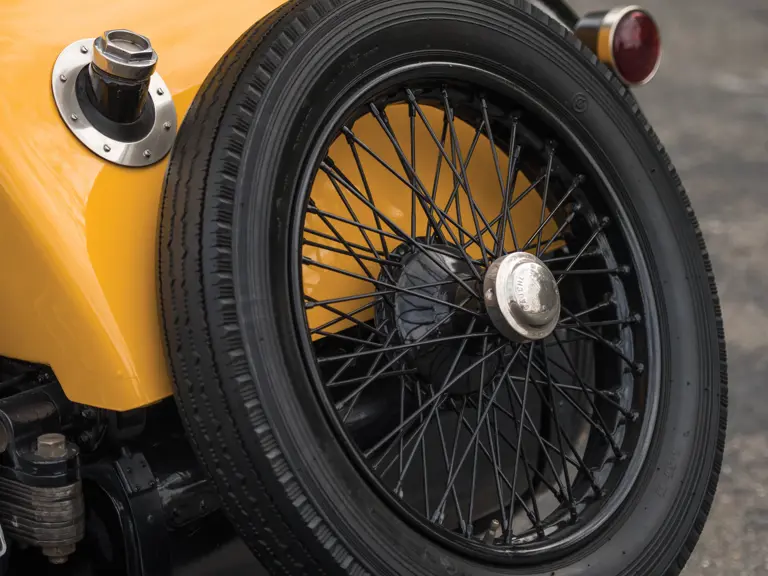

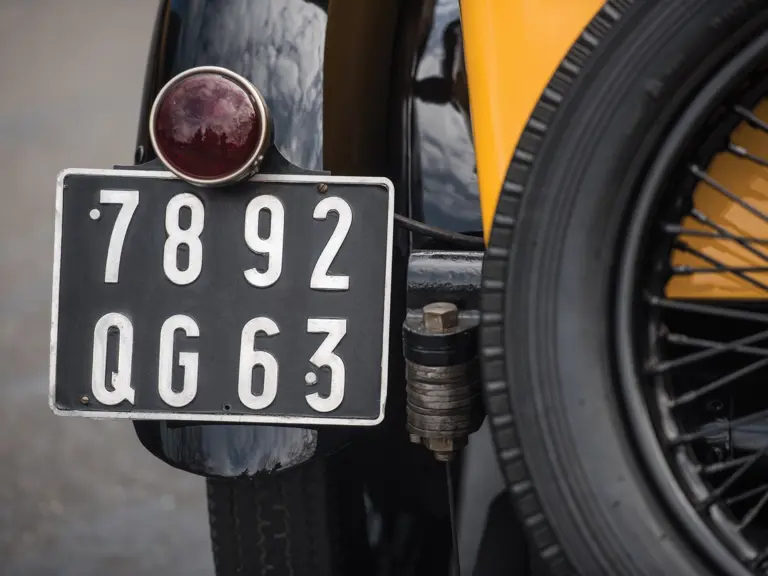
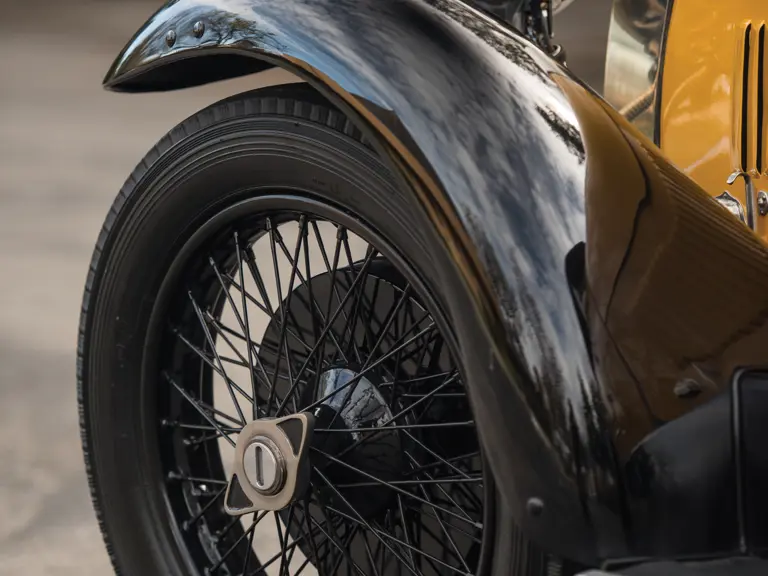
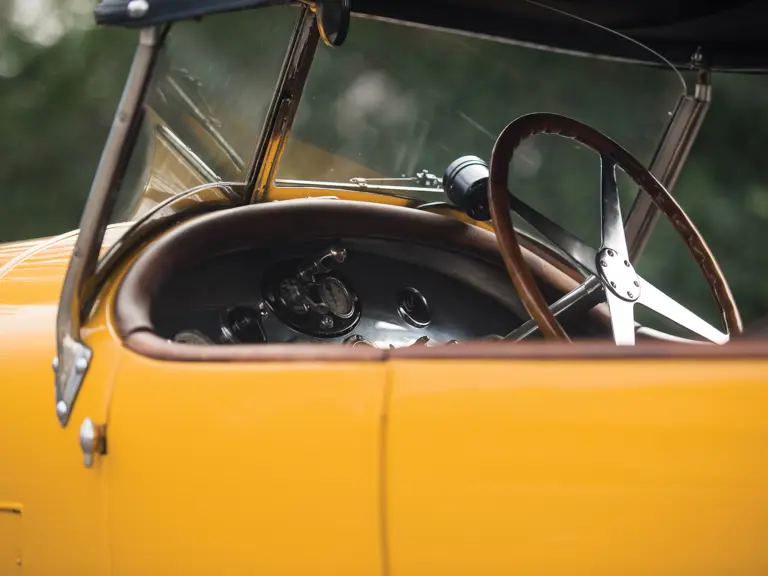
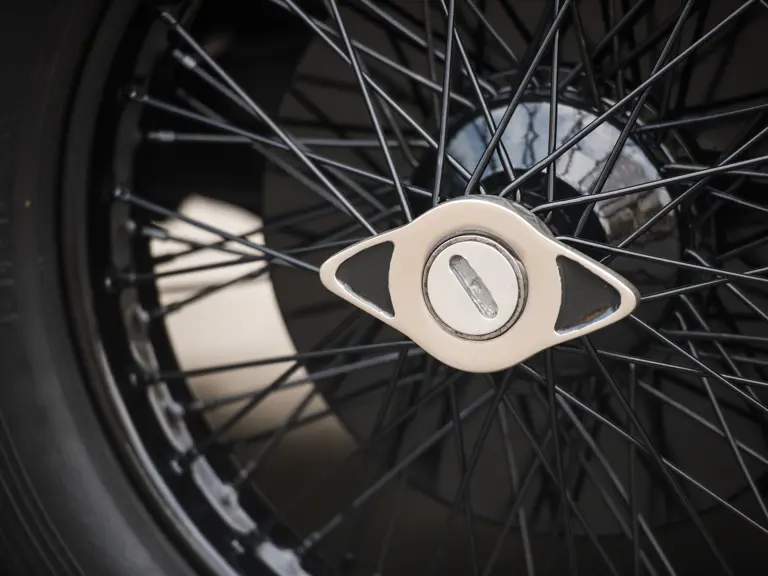
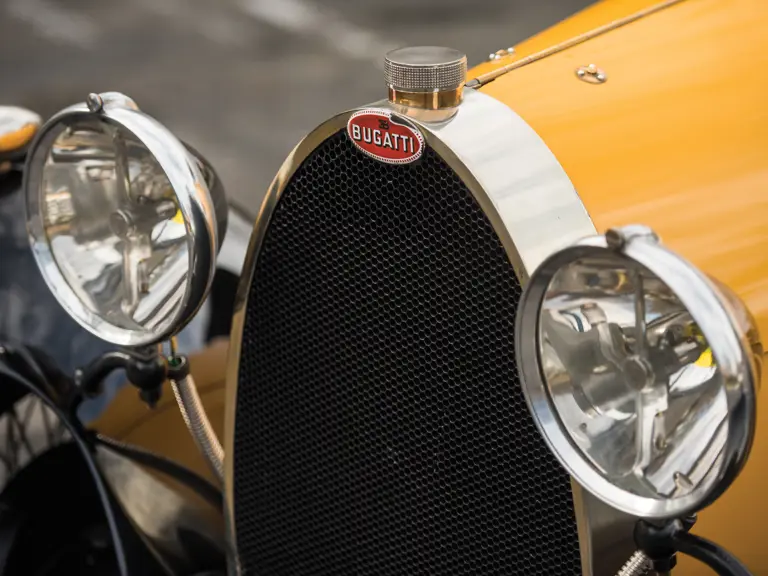



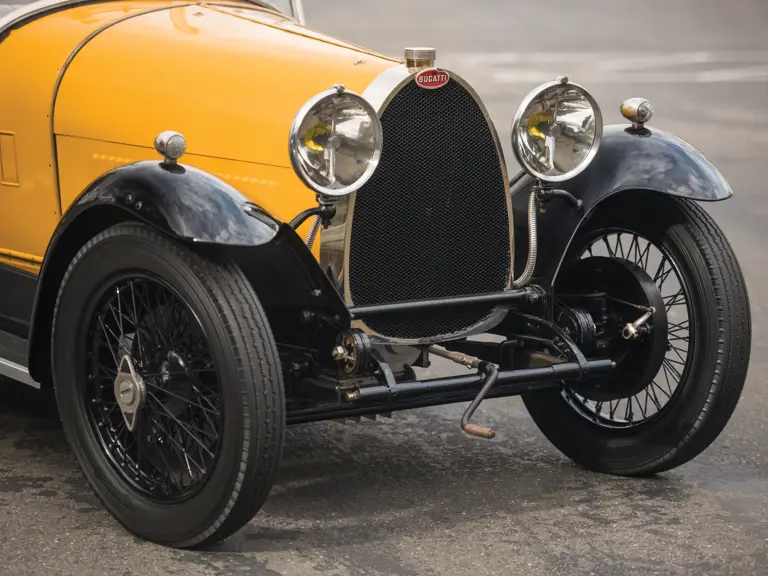


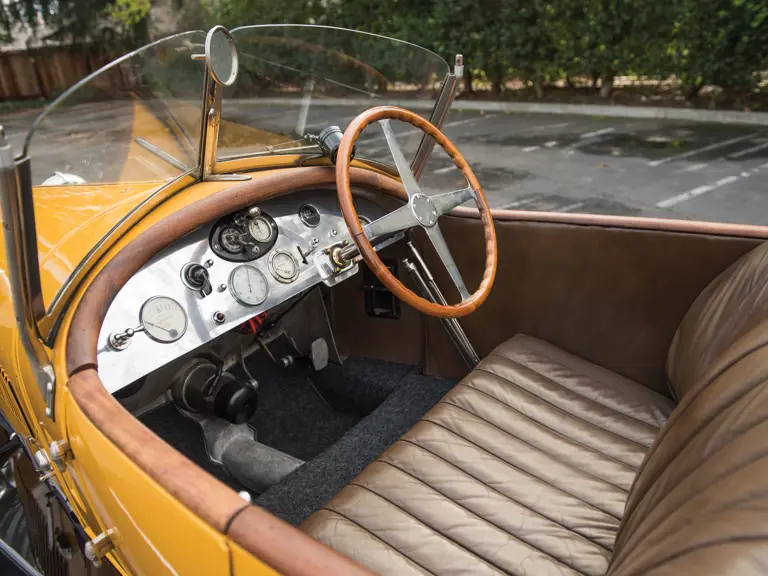





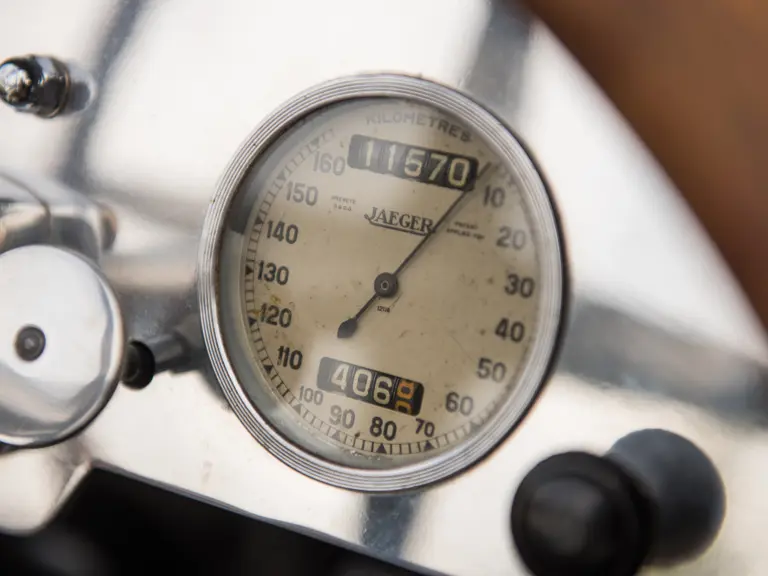
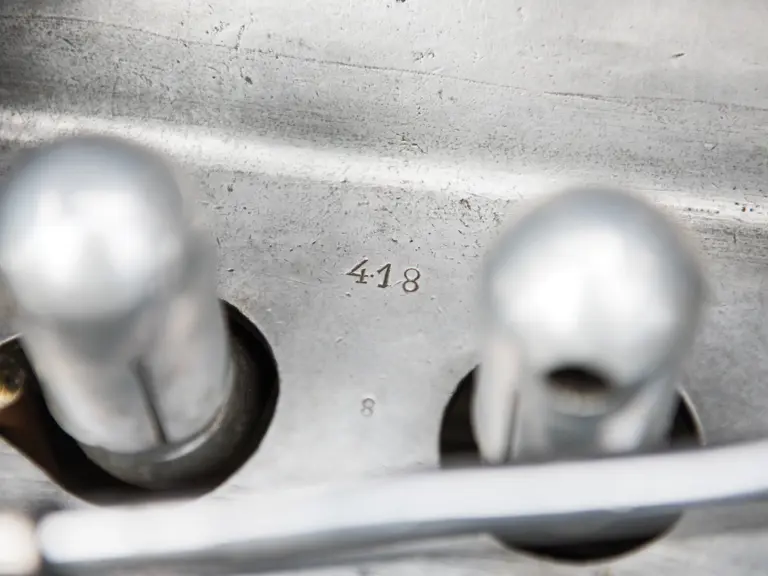
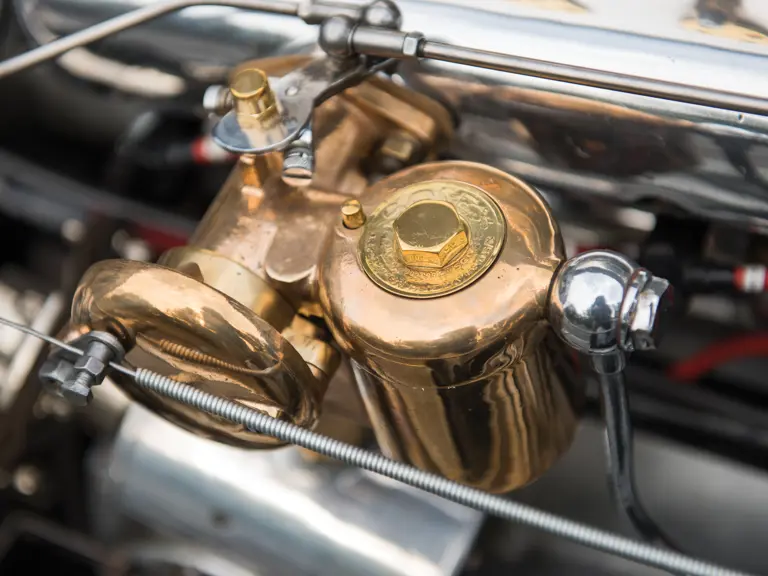
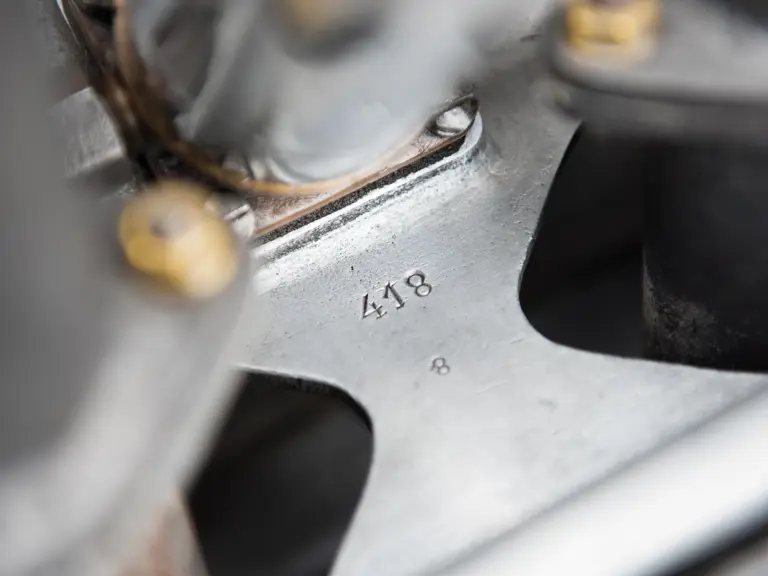
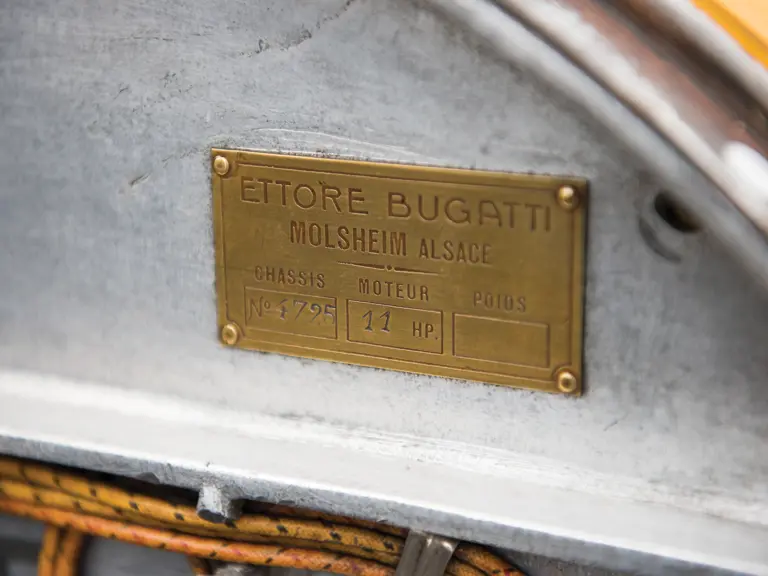
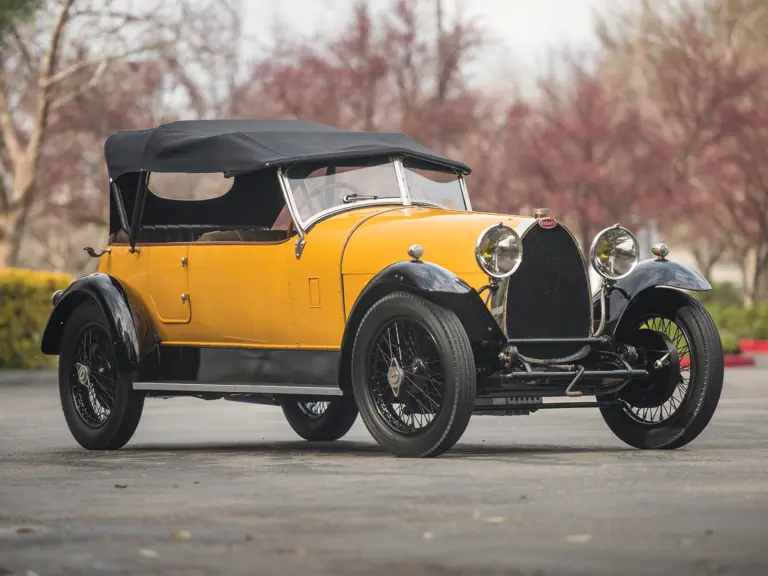
 | Amelia Island, Florida
| Amelia Island, Florida
